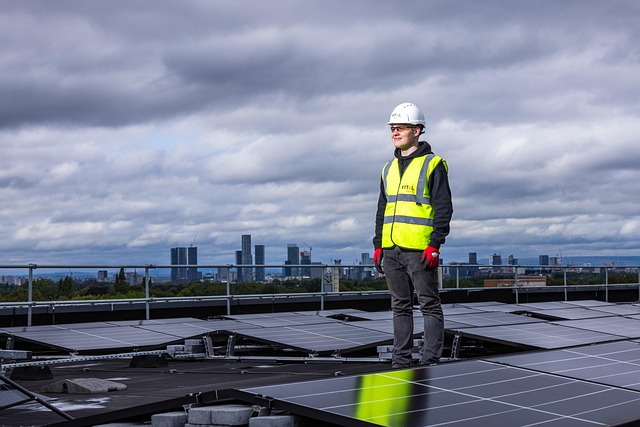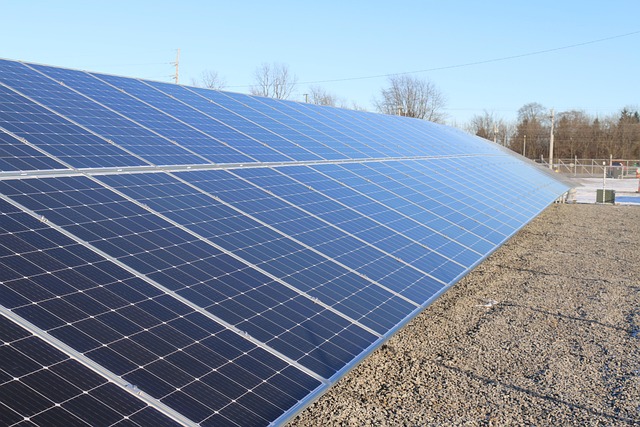The Role of Green Energy in Combating Climate Change
Climate change is one of the most pressing challenges of our time, affecting every corner of the globe. The rising temperatures, erratic weather patterns, and increasing frequency and intensity of natural disasters can be directly linked to greenhouse gas emissions, primarily from fossil fuels used in energy production. As nations grapple with this urgent issue, the transition to green energy emerges as a fundamental strategy in combating climate change. This article will delve into the role of green energy in mitigating climate change, exploring its benefits, technologies, and the challenges to widespread adoption.
Understanding Green Energy
Green energy refers to energy that is generated from renewable sources, such as solar, wind, hydro, geothermal, and biomass. Unlike fossil fuels, these sources are naturally replenished and have a significantly lower environmental impact. Green energy is characterized by its ability to produce power without the harmful emissions associated with traditional energy sources, making it a crucial component of sustainable development.
The Significance of Green Energy in Climate Mitigation
The impact of green energy on climate change mitigation cannot be overstated. The transition from fossil fuels to renewable energy sources plays a pivotal role in reducing greenhouse gas emissions. Approximately 70% of global carbon dioxide emissions stem from energy production, particularly in the form of electricity and heat. By replacing conventional energy sources with renewable alternatives, major reductions in CO2 emissions can be achieved.
Moreover, green energy technologies promote energy efficiency, further decreasing the reliance on fossil fuels. For instance, advancements in solar panel efficiency mean that less land and fewer resources are needed to generate equivalent amounts of energy compared to traditional sources. Consequently, harnessing green energy can lead to a significant deceleration of global warming trends.
Types of Green Energy Technologies
Several renewable energy technologies are at the forefront of the green energy transition. Each has its unique characteristics and advantages:
Solar Energy
Solar energy is harnessed through photovoltaic cells or solar thermal systems. It is abundantly available and can be utilized at both small and large scales, from residential rooftops to vast solar farms. Recent advancements have also made solar panels more efficient and cost-effective, contributing to the increasing adoption of solar technologies worldwide.
Wind Energy
Wind energy is produced by capturing the kinetic energy of wind through turbines. It is one of the fastest-growing energy sources globally due to its high efficiency and scalability. Offshore wind farms have emerged as a significant player, capable of generating larger amounts of power with minimal land usage.
Hydropower
Hydropower, generated by the movement of water, has been a staple of green energy production for decades. Dams and run-of-river systems can convert the energy from flowing water into electricity. Although hydropower has established infrastructure, it can pose ecological challenges and requires careful management to mitigate environmental impacts.
Geothermal Energy
Geothermal energy harnesses the Earth’s internal heat, providing a stable and reliable energy source. This form of energy generation is particularly effective in areas with volcanic activity and has the potential for both large-scale power generation and direct heating applications.
Biomass
Biomass energy is produced from organic materials, such as plant matter and waste. By converting these materials into biofuels or burning them for energy, biomass can serve as a renewable energy source. It is important, however, to manage biomass production sustainably to prevent deforestation and competition with food supplies.
The Economic Perspective of Green Energy
The economic implications of transitioning to green energy are substantial. Investing in renewable energy technologies presents significant job creation opportunities, surpassing those in fossil fuel industries. The International Renewable Energy Agency (IRENA) has reported that employment in the renewable sector could reach 24 million by 2030 if the right policies and investments are in place.
Additionally, as technology costs continue to decrease, green energy is becoming increasingly competitive with fossil fuels. Government incentives and private sector investments are propelling this shift forward, making clean energy feasible for a broader range of consumers and businesses.
Transitioning to green energy not only protects the environment but also enhances energy security and resilience. Countries that invest in a diversified energy portfolio that includes renewable sources are better positioned to withstand geopolitical tensions and market fluctuations associated with fossil fuels.
Challenges to Green Energy Adoption
Despite the numerous advantages of green energy, several challenges hinder its widespread implementation. One major hurdle is the intermittency of renewable sources like solar and wind energy, as they depend on weather conditions and time of day. This variability necessitates the development of energy storage solutions and grid management technologies to ensure a reliable energy supply.
Additionally, transitioning from fossil fuels to renewables often requires significant upfront investments. Governments and private entities must commit to funding infrastructure development, research opportunities, and incentives for consumers to adopt green technologies. Political resistance and lobbying from fossil fuel interests can also create barriers to change, making it essential for policymakers to prioritize sustainability.
The Role of Policy in Promoting Green Energy
Government policy plays a vital role in accelerating the transition to green energy by establishing regulations, subsidies, and incentives to promote renewable energy investments. Strategies can include:
1. Mandating renewable energy targets for utilities and corporations.
2. Providing tax credits or rebates for renewable energy installations.
3. Implementing carbon pricing mechanisms, such as a carbon tax or cap-and-trade systems, to incentivize emission reductions.
4. Funding research and development for emerging technologies to enhance efficiency and affordability.
International agreements like the Paris Agreement also underscore the global commitment to reducing greenhouse gas emissions. By encouraging countries to set and meet emission reduction targets, these agreements foster a collaborative approach to tackling climate change.
The Future of Green Energy
The future of green energy appears promising, as technological advancements and societal shifts towards sustainability gain momentum. The integration of artificial intelligence and the Internet of Things (IoT) into renewable energy management is set to optimize efficiency and resource allocation.
Moreover, the movement towards electrification, particularly in transportation, is likely to spur further demand for renewable energy solutions. As electric vehicles gain popularity, the need for clean electricity sources will become even more critical, driving innovations in energy storage and grid integration.
Community engagement and grassroots efforts are also integral in fostering a culture of sustainability. Local initiatives aimed at promoting solar energy adoption or wind energy projects can empower individuals and communities to take charge of their energy consumption and contribute to climate action.
Conclusion
The transition to green energy is essential for combating climate change and achieving a sustainable future. As technology continues to advance and society embraces renewable energy sources, there is an opportunity to create a cleaner, healthier planet for future generations. By investing in green energy infrastructure and prioritizing policies that support sustainable energy solutions, we can mitigate the impacts of climate change and pave the way for a more resilient global economy.
Ultimately, the role of green energy goes beyond just addressing climate concerns; it embodies a vision for a sustainable and prosperous future where economic growth and environmental stewardship go hand in hand.



